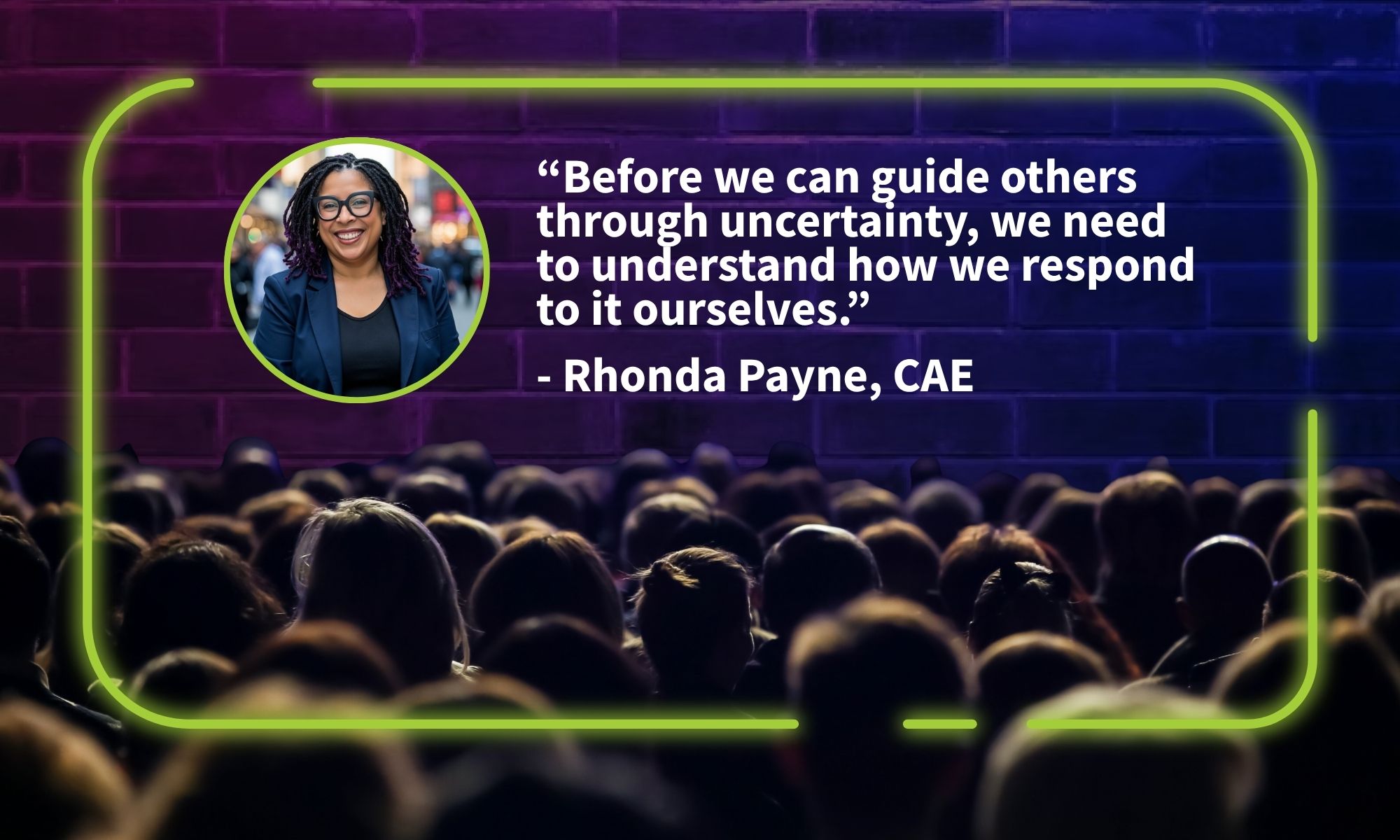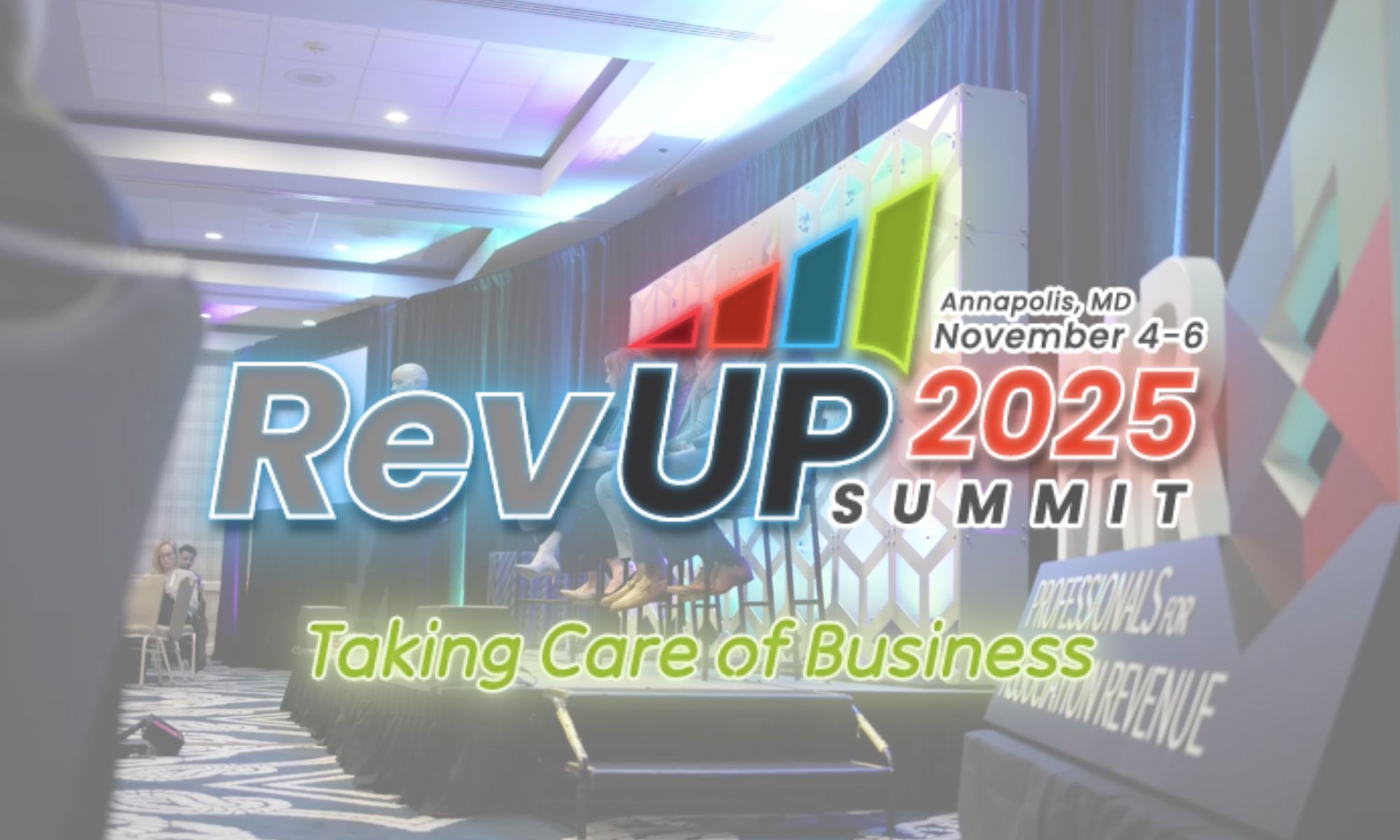The Change Leadership Q&A Every Association Executive Should Read

Ideas and strategies fuel association revenue growth, but there’s an overlooked factor that determines whether those strategies succeed or stall: change management.
That’s why the headlining keynote at this year’s PAR RevUP Summit is change expert Rhonda Payne, CAE.
Just as product development requires strategy, so does managing the change that makes growth possible. Every RevUP attendee will take part in Payne’s Change Leader Style Navigator self-assessment—a tool to help leaders understand their natural strengths and leverage their style intentionally.
Before taking the stage, Payne shared with PAR why more than half of association change initiatives fail, and what leaders can do differently to turn change into momentum.
Q: You’ve said that more than half of association change initiatives fail. From your perspective, what’s the most common reason growth leaders miss the mark when driving change?
The most common reason growth leaders miss the mark? Leaders assume logic will override emotion. Too many association revenue leaders treat change initiatives like a project plan with a tactical rollout when it’s also very much a people process. We’re trained to develop business plans that optimize performance and map a path forward toward new revenue models, new partnerships, and new member value. But every major shift—whether it’s adopting AI tools, restructuring the org chart, sunsetting legacy programs, or entering new markets—triggers grief, doubt, and friction. That’s not dysfunction. That’s human. The most logical and profitable changes can still stall if the emotional realities of the change are ignored.
The most successful change efforts I’ve seen don’t just focus on execution. They anticipate the emotional arc, activate diverse change leaders who bring urgency, vision, care, and rigor collectively, and resource driving and restraining forces accordingly from introduction to adoption at scale.
Q: Your session includes a self-assessment. Why is it important for leaders to understand their own “change leader style” before they can effectively lead others?
Change leadership isn’t just strategic, it’s deeply personal. Every leader has a “go-to” style when navigating change. Some lead with bold vision, others with empathy, structure, or systems thinking. Some charge ahead and challenge the status quo, others protect what has been proven to work in the past. Each of our strengths can be valuable assets or major liabilities if used in the wrong moment or applied too rigidly. What I’ve seen across dozens of associations: when major change initiatives get hard (and it always gets hard), leaders under pressure fall back on what’s familiar and therefore comfortable. The visionary doubles down on inspiration. The planner obsessively tweaks the rollout. The consensus-builder over-consults. And the driver tries to muscle through resistance.
Before we can guide others through uncertainty, we need to understand how we respond to it ourselves. When we don’t recognize our own patterns, we lead on autopilot and miss what the moment actually needs. That’s why the Change Leader Style Navigator matters. We don’t need to change our style. We need to leverage it intentionally. The self-assessment gives each growth leader a fast, practical lens to spot their default strengths and better understand the gaps that might trip them up. It also helps participants appreciate and activate others who lead through change differently. There is a competitive advantage that exists when all change leader styles co-build the table.
Q: Associations often face resistance when introducing new programs or markets. What's one mindset shift leaders can make to turn resistance into momentum?
Treat resistance like data—not defiance. Most resistance isn't about the idea or future state itself. It's about what that idea disrupts, which may not even be understood until it’s happening. Identity, workload, trust, power, competence, belonging—it's all in play. When growth leaders view staff and customer pushback as useful input instead of personal opposition, they unlock the currency of curiosity instead of control.
Every change involves loss, even positive change. When you introduce a new market focus, the team that built expertise in the old market loses their status as experts. When you launch a new program, established programs compete for resources and attention. People aren't being difficult—they're experiencing real loss. Too often, we expect people to "get over it" and "see the vision." But unacknowledged loss doesn't disappear. It goes underground as passive resistance, delayed implementation, and quiet (or not so quiet) disengagement.
The mindset shift I’d like to see? Stop asking, "How do I get them on board?" Start asking, "What's the loss they're grieving?" Instead of selling harder when we hit resistance, get genuinely curious. Listen for the underlying loss: autonomy, relevance, relationships, certainty, or identity. Then address it directly. Sometimes that means adjusting the plan. Sometimes it means creating transition support. Sometimes it simply means naming the loss out loud so people feel seen.
Change resistance is organizational intelligence trying to surface. Our job isn't to overcome it—it's to decode it. It’s a bit of a paradox, but when we slow down and meet resistance with curiosity, we actually speed up adoption in the long run. Tension becomes traction because it transforms resisters into partners. They stop fighting to be heard and their resistance becomes our early warning system for failure points we need to consider and address.
Q: Change leadership requires the entire team. How can associations better activate different leadership styles across staff, boards, and volunteers to create traction?
Every person in the association can lead themselves and others as a change agent—but I think to suggest that everyone plays the same role is a mistake that can create confusion and burnout. When I help associations architect major change initiatives, I help them think about three distinct roles: change managers, change sponsors, and change leaders.
Each brings something distinct and necessary to the table. When these roles are blurred we risk a diffusion of responsibility and accountability for leadership. When that happens, change initiatives stall or fail completely. Clarity of roles, and a change leader network that empowers diverse change leader styles (not just departmental representation) at the right phase of the change initiative set the stage for sustainable traction.

Meet RevUP 2025 Keynote Speaker, Rhonda Payne, CAE
Rhonda Payne, CAE (she/her) is the high-voltage force behind Flock Theory, the deliberately diverse professional speakers bureau and management consultancy shaking up the status quo. A powerhouse association impact strategist and all-around hype woman for purpose-driven leaders and nonprofit membership organizations, Rhonda’s work connects the dots across organizational strategy, workforce inclusion, and high-impact learning & development. See Rhonda take the stage on November 5, 2025 at the RevUP Summit.